Recovery of the osprey in Andalusia (South Spain)
The Osprey
 The Osprey, in the past seen frequently in the country, disappeared as a result of the urban voracity on the coast and the direct persecution of birds of prey, their presence being limited to the wintering of specimens from central and northern Europe. Thanks to a reintroduction program carried out by the Fundación Migres, it reproduced again in the provinces of Cádiz and Huelva. It currently has a stable population of 17 breeding pairs, in the hope that it will continue to grow in the coming years. Help us to get them out of danger and enjoy them. The goal is to reach a population of 100 couples by 2025.
The Osprey, in the past seen frequently in the country, disappeared as a result of the urban voracity on the coast and the direct persecution of birds of prey, their presence being limited to the wintering of specimens from central and northern Europe. Thanks to a reintroduction program carried out by the Fundación Migres, it reproduced again in the provinces of Cádiz and Huelva. It currently has a stable population of 17 breeding pairs, in the hope that it will continue to grow in the coming years. Help us to get them out of danger and enjoy them. The goal is to reach a population of 100 couples by 2025.
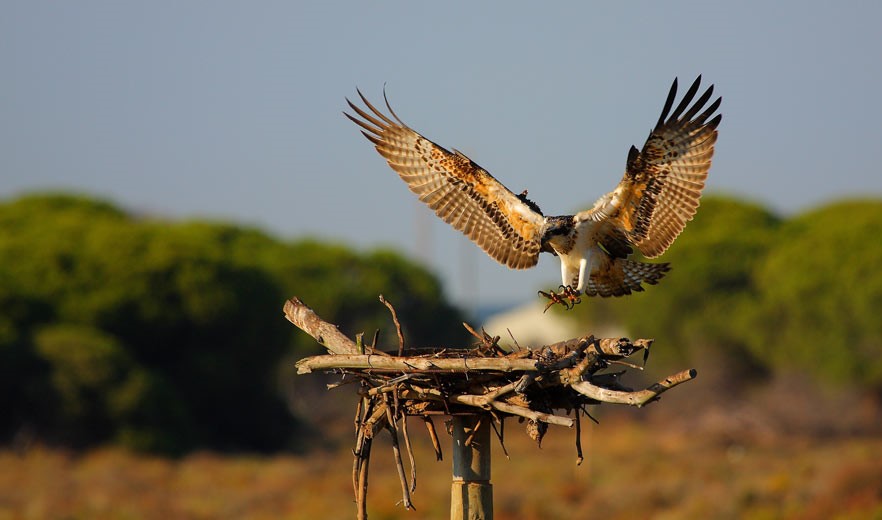
Osprey specimen
Project Description
Who we are?
Fundación Migtrd is a non-profit private foundation of a scientific nature, in 2003, together with the Andalusian goverment and de Doñana Biological Station (CSIC), we initiated the proyect to reintroduce the Osprey in order to recover it as a breeding stock in the Iberian Península.
Currently Fundación Migres works on the biological monitoring of the species, in the manufacture of nesting structures that help the population's growth and in the correction of problems that hinder reproduction (occupation of nests by storks, electrocutions ...) with the support of citizen participation.
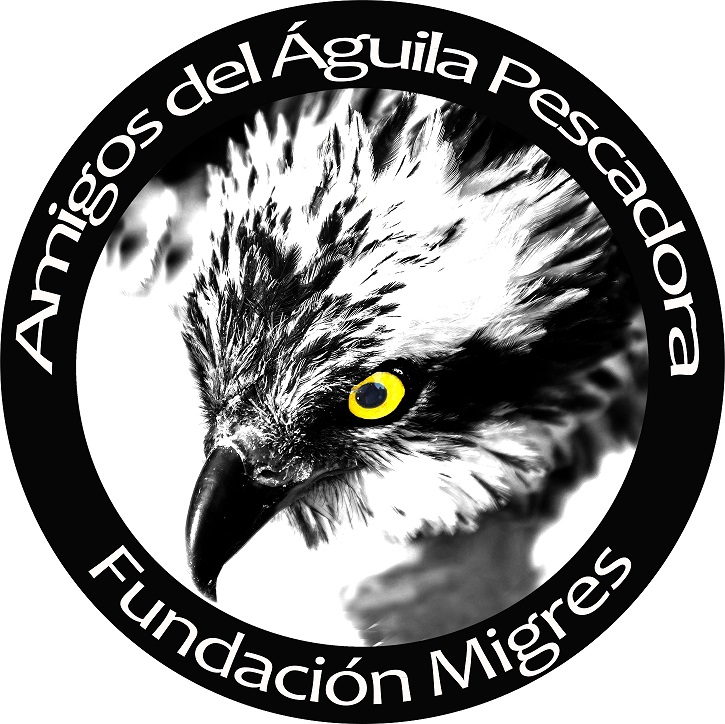

History. Extinction: dates and causes.
Osprey previously occupied with certainty six coastal zones: Alicante, Asturias, Cádiz, Gerona, Granada-Málaga and Valencia.
The last couple that has been recorded in the Península was in Cerro de Caleta, Málaga, which was occupied until 1982.
Among the causes of extinction of the species are:
The reason for its reintroduction.
The main objetive of the reintroduction is to recover an artificially extinct species, thus contributing to the conservation of biodiversity. The specific objetive is to establish a stable and self-sufficient population of this species in Andalusia that serves in turn to connect European and African populations, currently isolated by the lack of a stable population in the Iberian Península.
General objectives:
How did it take place
In 2003 the liberation of young ospreys from Germany, Scotland and Finland, began in places previously analyzed and that were suitable for reproduction and, therefore, for the success of reintroduction. The study of habitat availability for reproduction was addressed to both coastal areas and reservoirs.
Phases for reintroduction
The chicks.
The young osprey must be of the same species as the one that was extinct and come from different countries with abundant osprey populations to enrich the genetic diversity of the resulting population and promote their survival. In addition, each chick has a metal ring with its country of origin.
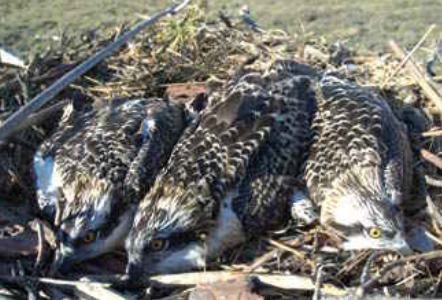
Osprey chicks
System of "Hacking" and liberation
The system of "hacking" consists of raising chicks in a state of semi-freedom, placing them in artificial nests, where they are fed for about a month, until they are able to fly, at which time they are released. Then they are fed in artificial nests located in the area. During this period the individuals are imprinted with the area, considering it their native area. Due to the philopatry shown by these birds of prey, when they are adults they return to this same place to breed.
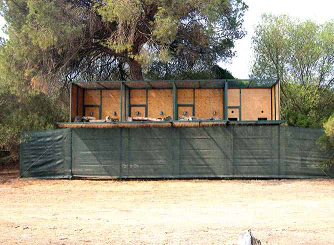
Liberation towers
Marking and tracking
One we locate breeding pairs we must continue monitoring the new specimens and follow up to ensure the progress of the species. It is important to check the health of the new specimens before migration and to band them for easy recognition.
Placement of artificial nest
To facilitate the breeding of Osprey in Andalusia and get a stable population, we continue to place artificial nests near water bodies. For this we have the help of citizens who collaborate selflessly in the creation and placement of these.
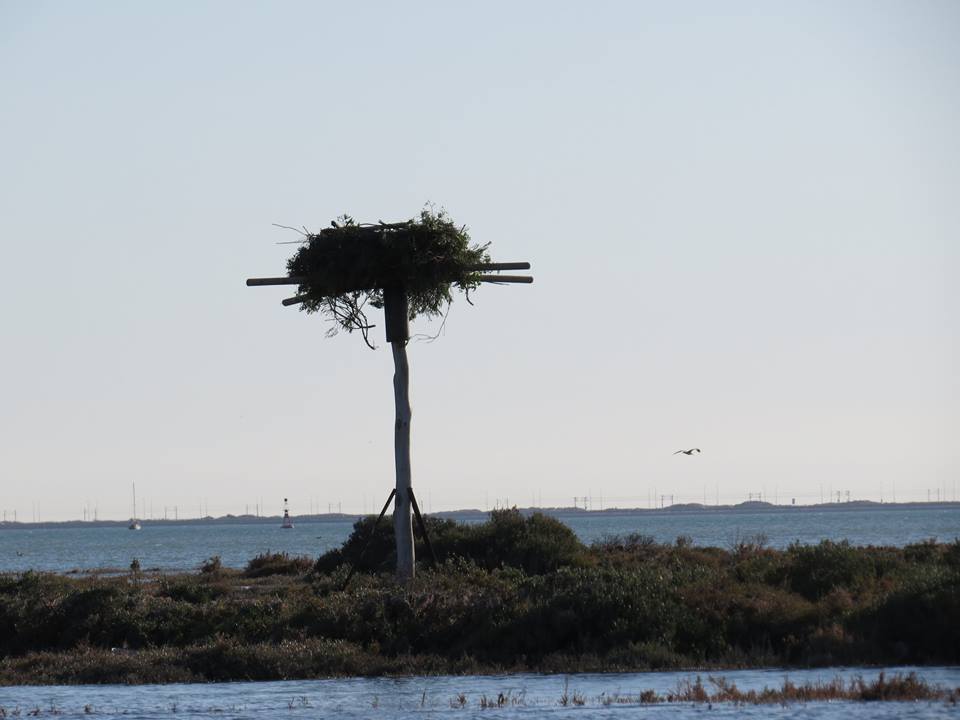
Artificial nest placed near a body of water

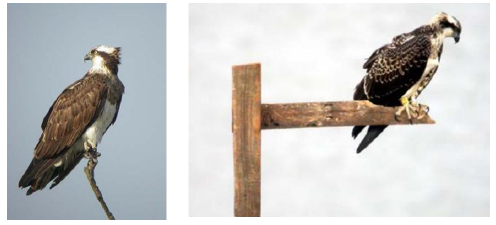
Osprey perching on natural perch (left). Osprey perching on articial perch (rigth)
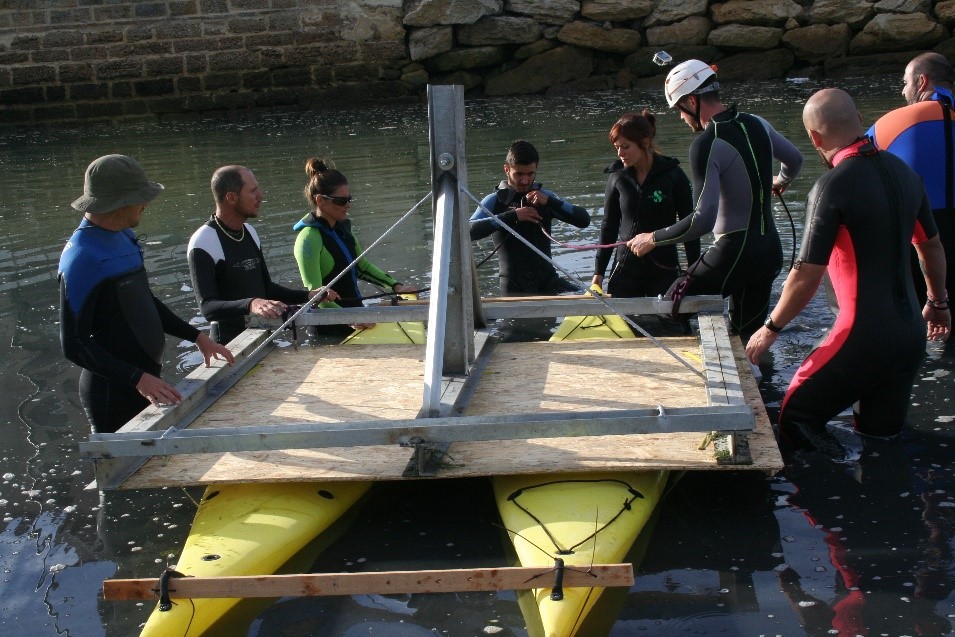
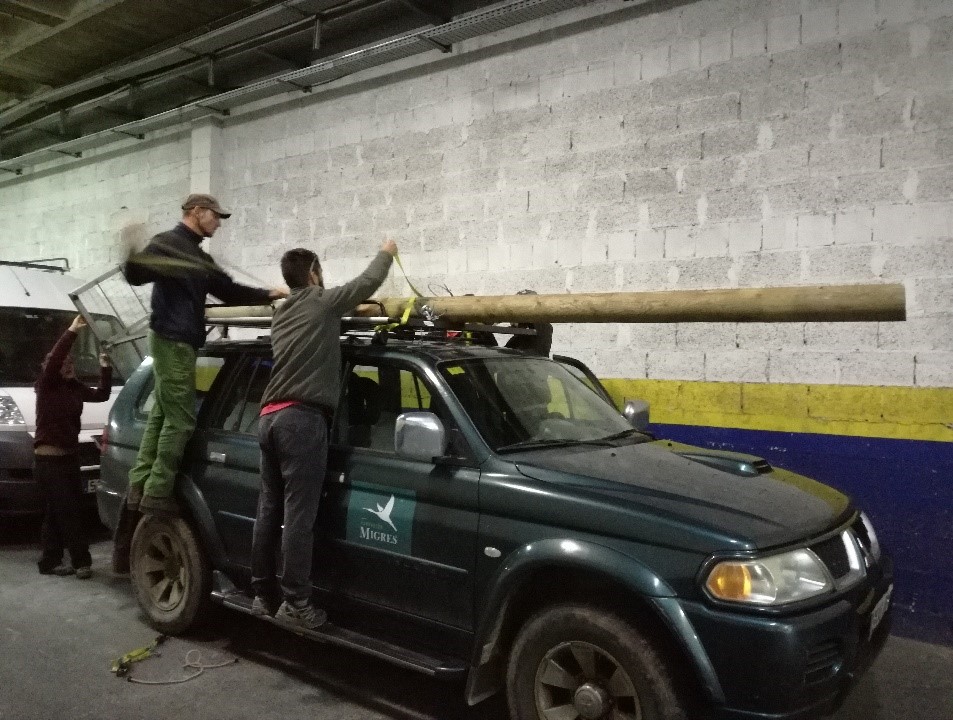
Staff of the Migres Foundation coordinating the construction and placement of a new platform with the help of volunteers from the group "Friends of the Osprey”.
Present state of the population and future objective
From 2003 to 2012 a total of 191 young ospreys have been released. The first territory occupation took place in 2005. Currently, we have a population of 17 breeding pairs.
The final goal is to reach 100 breeding pairs by the year 2025.



